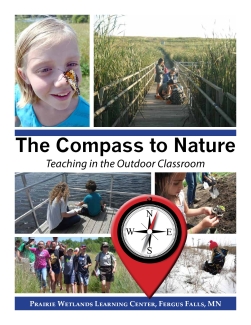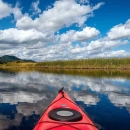
When humans have a relationship with the outside world, they care about it. David Sobel, author of Beyond Ecophobia, clearly reminds us that this must be first priority in connecting people with nature. The Compass to Nature is a group of four components for building relationships with nature. It works for children; it works for adults. As a navigational compass enables us to guide our way outside, the four points of the Compass to Nature provide unfailing direction for all who seek to lead others in the development of a connected, caring relationship with the world we live in. Unifying the four components is the sense of wonder promoted by Rachel Carson in her book entitled, The Sense of Wonder. The sense of wonder, or awe, is the primary means by which the human heart is connected to nature. It is the glue which holds the other four Compass components together. Leave out wonder, and relationship building with nature is ineffective.
| Attachment | Size |
|---|---|
| Compass_to_Nature_teaching_in_the_outdoor_classroom.pdf2.26 MB | 2.26 MB |
